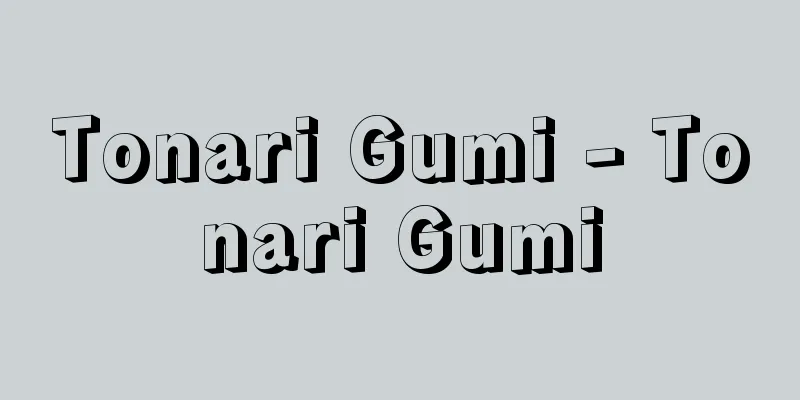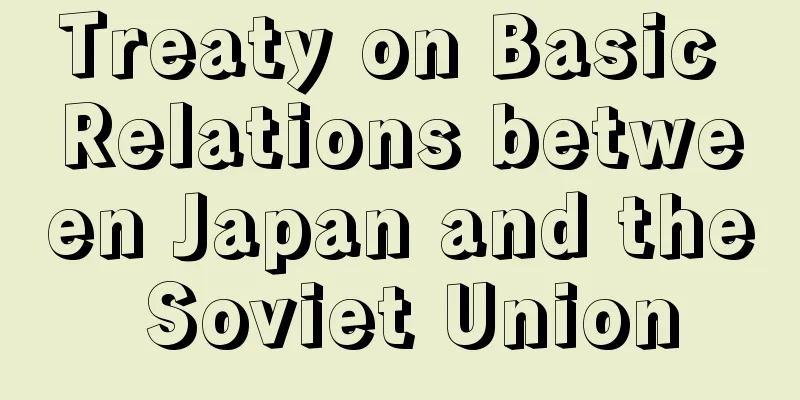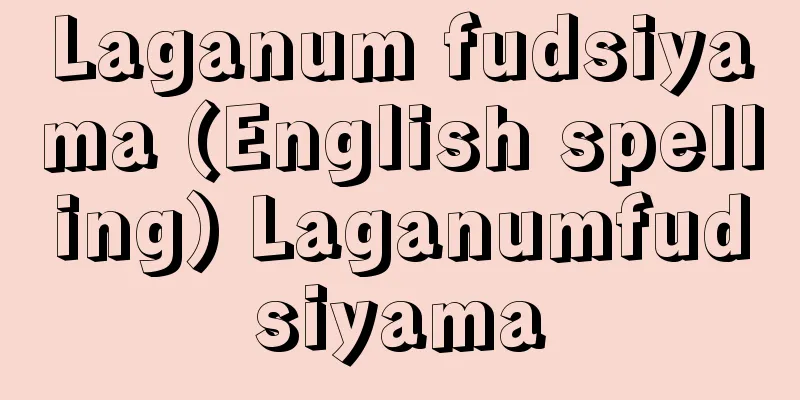Tonari Gumi - Tonari Gumi

|
A lower level organization of the neighborhood association. It is also called group, group, or neighborhood group. During World War II, the terms "neighborhood association" and "chonaikai" were used interchangeably, and so some people began to use "neighborhood association" to refer to the neighborhood association itself. Institutionally, the formation of neighborhood associations was made mandatory by the "Outline for the Development of Buraku Associations and Neighborhood Associations" of 1940 (Showa 15). Neighborhood associations were responsible for the transmission of top-down information, distribution of food and other necessities, air and fire defense, resource recovery, national savings, physical improvement and welfare, and various other forms of national control that came with the wartime system. In particular, the "regular meetings" system was established for neighborhood associations, and mutual harmony and assistance through discussions for small groups of around 10 households was emphasized. It can be said that this is an aspect of strengthening the ideology of the "spirit of harmony" and the "principle of harmony." Through the unity of small groups in the regular meetings, the activities of neighborhood associations were made more substantial. In this respect, even in the same urban area, in the downtown area, which already had a sense of unity as a neighborhood, the regular meetings-neighborhood association-neighborhood association system worked in a way that spread relatively smoothly throughout the neighborhood. On the other hand, in the uptown area and suburban areas, which lacked a sense of unity as a neighborhood, the system was perceived as being out of place in the realities of the area. Paradoxically, it can be said that the unity of small groups such as regular meetings and the spirit of harmony were emphasized ideologically in the uptown and suburban areas. However, the "Outline for the Development of Buraku Associations and Neighborhood Associations" was abolished by the Potsdam Decree in May 1947 (Showa 22). Even after the Second World War, the Neighborhood Association-Tonarigumi system has undergone significant changes in terms of the ideological aspects of the times, but the system itself continues to function. In terms of research, data has been accumulated on the Neighborhood Association-Tonarigumi system as a powerful form of local organization, and recently, international comparative research on the Neighborhood Association-Tonarigumi system as a local organization has also been seen. In particular, comparative studies with similar organizations in former occupied countries (such as the Philippines) where the model of the Japanese Tonarigumi system was transplanted during the war have become a theme. [Michihiro Okuda] "Tokai Municipal Research Institute, ed., The Future of Neighborhood Associations and Community Associations (1983, Municipal Research Institute)" ▽ "Yoshihara Naoki, Regional Residents' Organizations in Asia: Neighborhood Associations, Town Associations, RT/RW" (2000, Ochanomizu Shobo) [Reference] | | |Source: Shogakukan Encyclopedia Nipponica About Encyclopedia Nipponica Information | Legend |
|
町内会の下位組織。組、班または隣保班とも称される。第二次世界大戦中は、隣組と町内会はほぼ同様に使用されており、したがって隣組とは町内会自体のことをさす向きも生まれた。制度的には、隣組は、1940年(昭和15)の「部落会町内会等整備要綱」によって結成することが義務づけられていた。隣組は、上意下達的な情報の伝達、食糧その他生活必需品の配給、防空防火、資源回収、国民貯蓄、体位向上・厚生、そのほか戦時体制下に伴うさまざまの国民統制の末端を担っていた。 とくに隣組には「常会」の制度が設けられ、10戸前後の小集団単位ごとに話し合いなどによる相互の融和と援助が強調されていた。「和の精神」「和合原理」のイデオロギー強化の側面ともいえる。常会の小集団単位のまとまりを介して、町内会活動の実質化が図られていた。この点、同じ都市地域でも、もともと町内としてのまとまりをもつ下町では、常会―隣組―町内会のシステムは、町内に比較的スムーズに浸透する形で機能した。反対に町内としてのまとまりを欠く山手、郊外では、地域実態とは違和感をもって受け止められた。逆説的ではあるが、常会などの小集団単位のまとまり、和の精神は、むしろ山手、郊外地域にイデオロギー的にも強調される意味があったともいえる。しかし、「部落会町内会等整備要綱」は1947年(昭和22)5月ポツダム政令で廃止された。 町内会―隣組のシステムは、第二次世界大戦後においても、時代思想的側面は大きく変わったが、システム自体としては依然として機能し続けている。調査研究面でも、地域組織の有力な型としてデータ的蓄積が図られているが、最近では町内会―隣組の地域組織としての国際比較研究もみられるようになっている。とくに戦時中に日本の隣組制度の範型が移植された旧占領国(フィリピンなど)の類似組織との比較検討がテーマをなしている。 [奥田道大] 『東海自治体問題研究所編『これからの町内会・自治会』(1983・自治体研究社)』▽『吉原直樹著『アジアの地域住民組織――町内会・街坊会・RT/RW』(2000・御茶の水書房)』 [参照項目] | | |出典 小学館 日本大百科全書(ニッポニカ)日本大百科全書(ニッポニカ)について 情報 | 凡例 |
Recommend
Kao - Kao
A symbol written in place of a signature. It is a...
Poynings, E.
…the Act governing the British colony in Ireland....
Antony's Fire - Antony's Fire
…In 1050, the remains of the saint were brought f...
Rock climbing - Iwanobori
Rock climbing refers to climbing up and down rocky...
Silver wattle
...Because its distribution range is mainly from ...
Swine erysipelas (swine erysipelas)
An acute, legally-recognized infectious disease of...
Jagiellonian dynasty - Jagiellonian
A Polish dynasty (1386-1572). It began when Grand ...
Haidar Ali (English spelling)
1722‐82 A Muslim king who ruled Mysore in southern...
Utsunomiya Domain
This was a Fudai clan that ruled the area around ...
Jan Blahoslav
1523‐71 He was the bishop of the Czech Brethren an...
Bichromic acid
...The chemical formula is H 2 Cr 2 O 7 . It is a...
concilia
…The Spartan assembly voted with shouts of approv...
Queue - bian-fa; pien-fa
Also called chihatsu. A hairstyle unique to men th...
Pomponius Gauricus
…Artists of the time, in particular, studied phys...
dandelion
...Intermediate forms are found in the areas betw...









